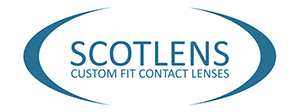LENSES & CARE PRODUCTS
Learning Outcomes
After completing this module you should:
- Be able to identify decentered TZ
- Understand TZ is not expected to change once
- If TZ changes occur external causes should be indicated.
LENS CARE & LENS CARE PRODUCTS
Every Nocturnal lens comes with Indication For Use information.
As well as lens details and basic handling instructions this states Nocturnal lenses are custom made, prescription only contact lens. Wear results in correction of myopia and myopia control, and that lenses should be replaced annually.

SOLUTION FOR LENS INSERTION
The best solution to put in the lens during insertion is a preservative free wetting drop Ocudry 0.3, Hycosan Extra or similar. Patients using a PF drop prevents them developing solution toxicity, which when mild can be difficult to diagnose as it can affect vision before any signs become visible. In addition to preventing solution toxicity developing, the lubricating effect of a wetting drop provides some cushioning and improves comfort.
Saline can be used for insertion also. This is generally preservative free avoiding toxicity reactions. It has less cushioning effect than wetting drops, some patients prefer this, other patients find it less comfortable.
Multi-purpose GP solutions can be used in the lens during insertion. Solution reactions can develop if this is the case.
SOLUTION FOR LENS CLEANING AND STORAGE
Any gas permeable solution is suitable for use with Nocturnal. The best care solution is Avizor Everclean, this is a peroxide solution with GP cleaning. It has the advantage that it is preservative free once neutralised, very effective cleaning and because no rubbing of the lens is required it maintains better lens surface over the life of the lens. Lens deposits are uncommon with night lens wear compared to day lens wear. Day wear means the tear film can dry out in between blinks, de-natured proteins and lipids are then prone to deposit on the dry lens surface. As the eye is always closed during night lens wear deposition is uncommon. Multi-purpose solutions like Avizor GP Multi, Oté Fine, Total Care, Boston cleaning and soaking are all suitable.
COMPLIANCE
The correction patients achieve can be affected by the solutions and lens care procedures.
If a deterioration in VA is noted at review, or reported by the patient consider the following:
- Is the patient wearing the lenses nightly. Part time wear will result in less stable power change on the cornea.
- Is the treatment zone power on topography the same as just after fitting. This power change should be stable long-term. A reduced power can indicate the patient is wearing the lens less, or the lens is being less effective. Lid roughness covered in Decentred Fits can result in less effect from lens wear.
- Is the patient cleaning the lenses as per the solution provided.
- Is the patient inserting with preservative free drops/solution. If not and they are otherwise compliant this should be started.
- Is there any conjunctival roughness. If the patient is compliant with preservative free drop for insertion consider topical/systemic allergy medication.
- Has any change occurred to sleeping patterns. Eye masks, sleeping face down etc.
- Is there any sign of blepharitis, MGD.
CASE EXAMPLE
This mid-40s male presented for fitting due to discomfort with the current mode of day lens wear, Acuvue daily disposable lenses. Full time wear was still possible but with discomfort and sensation of dryness after two hours. Ocular surface was healthy. Patient had worn contact lenses for over 15 years and did not want to stop as felt as benefit occupation as a manager and lifestyle playing golf and generally active with children.
Patient was excited by prospect of this new night lens correction.
Baseline
Rx: -2.25D 6/5 N5 R&L ADD +0.50 improved near comfort.
Onset of presbyopia was discussed.
At 2 weeks and six month review:
UVA: 6/5 N5 R&L
SE: Plano
Ocular surface: no stain (Fig.1)
Topography: Bullseye (Fig.1)
Outcome: Patient delighted “miracle cure!”

Annual Review
Patient collected new lenses two weeks previously with unchanged parameters. Patient was aware vision gradually not as good as when started wear, had thought may be old lens, but vision the same with the new lenses. “Film over eyes”, especially aware for driving at night, increased glare. No discomfort, eyes white.
Examination: (Fig.2)
UVA: 6/7.5 N5 R&L (previously 6/5 R&L)
SE: Plano
rRx: no improvement to VA
Ocular surface: lens imprint, punctate stain mid peripheral corneal and on scleral conjunctiva.
Topography: Decentred, superior nasal.

Discussion: The patient had a bullseye pattern when fitted. This is not expected to change with time, so external factors were considered.
- Lenses were newly issued. Worn in the correct eyes, patient aware the left lens is blue. No mix up suspected.
- No sleep masks or change to sleeping pattern had occurred.
- No history of or seasonal allergy experienced. It was November, low pollen count.
- Patient inserting lens with MPS gas permeable solution. This was identified as possible cause for change in ocular surface, a developing solution toxicity.
Action: Patient was changed to Everclean (combined peroxide protein removal based cleaning solution) and insertion with preservative free 0.2 Hyaluronic Acid eye drop.
Outcome: At review 2 weeks after starting preservative free cleaning and insertion drops px advises “film was lifted from eyes overnight, its back to the miracle cure”.
UVA: 6/5 N5 R&L
SE: Plano
Ocular surface: no stain (Fig.3)
Topography: The bullseye pattern has returned (Fig.3)
This occurred in 2011, this patient continues to wear Nocturnal night lenses with them still being their miracle cure.
Presbyopia: When fitting the patient was advised presbyopia may become an issue over the initial years. This was not the case, with this patient benefiting from the ADD effect in the treatment zone, they maintain a distance correction with only occasional reading glasses required at age 60.

